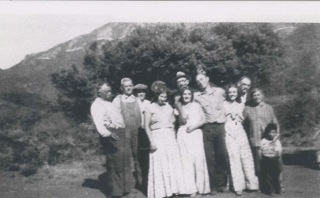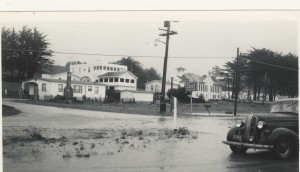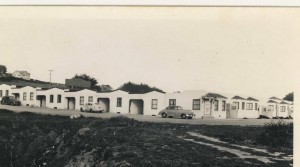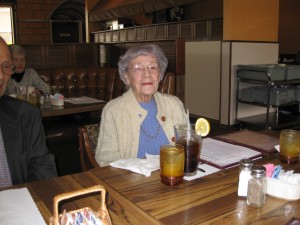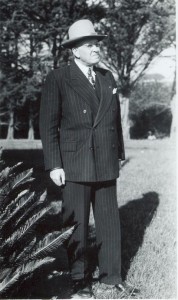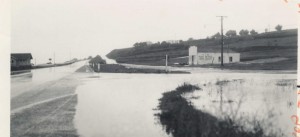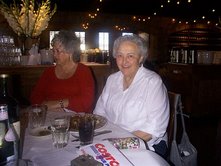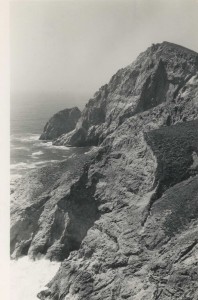[Image below. The Moss Beach Gas Station (that stood on the east side of Hwy 1) Mrs. Parker refers to in her letter. My neighbor, Mrs. Pacini, a longtime Coastsider, now in her 90s, believes some of her relatives are pictured,]
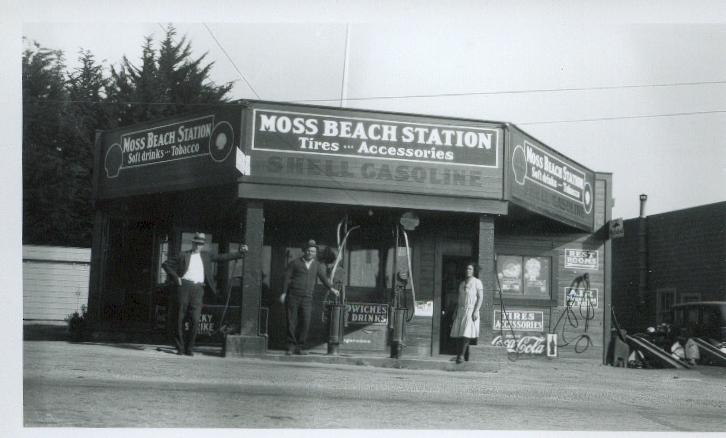
[ Thank you Mrs. Parker, who is Elaine Martini Teixeira’s cousin. More pix coming.]
[Image below: “My father and his two brothers lived and worked at this ranch when they first came to America.” Mrs. Parker’s father is the last man standing in the back row.]
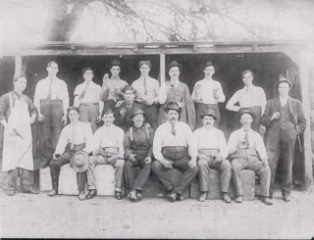
Dear Ms. Morrall,
As you will see I am not a writer.
I will do the best I can.
I wish I could tell you more.
May name is Sylvia nee Belli Parker.
I’m now a widow living in Cameron Park. I was born August 21, 1920. At that time we were living in one part of the house of Peter B. Kyne [the author] where my father farmed the land nearby.
[Image below: “My father loved his cars. This was in front of the Kyne house, Moss Beach.”]
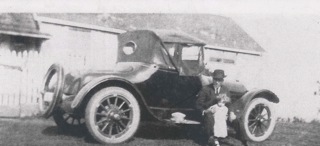
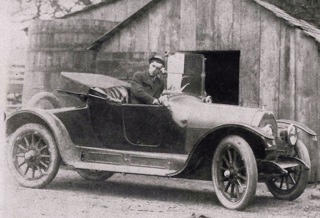
We later moved to a house, he (my father) had built on Etheldore (in Moss Beach) –
[Below: Images of the house then and now. I hope I got them in the right order]


It’s across the street from the grammar school.
Also across the street –later– a bocce ball was situated In the background
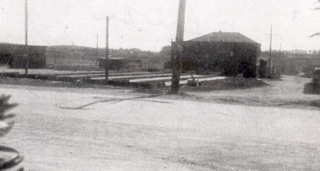
is the home of my mother’s brother, Roy Torre, and his wife, Pia, nee Nerli and children, David and June.
[Image below: “Torre Home on Sunshine Valley Road.” It was also a grammar school at one time.]
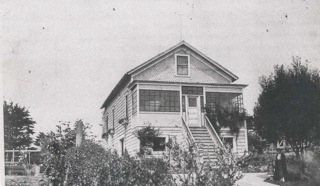
My father was born in 1889 in San Donato near Lucca in Tuscany, Italy. In 1906 he came to Moss Beach. He was sponsored by a local farmer.
[Image below: “Father farming near the railroad”]
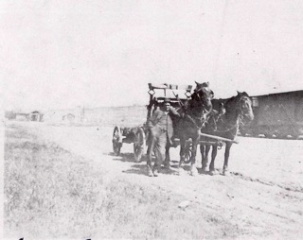
He became a USA citizen in 1917. He was quite ambitious and later farmed artichokes and sprouts on some of the land that now is the airport near Princeton. In 1917 he married my mother, Rose Torre.
My mother was born in 1898 to Octavia and Eugenia Torre
[Image below: “Love this picture of my grandfather Octavio Torre.]
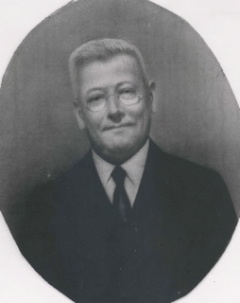
in San Francisco. After the San Francisco earthquake, the family moved to Moss Beach on Sunshine Valley. I’m sure that my aunt Lillian (Torre) Renard will tell you more of the Torre family.
I failed to mention he (Mrs.Parker’s father) built the service station in Moss Beach.
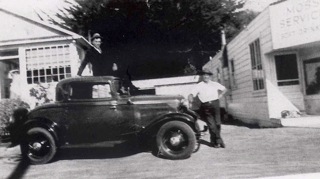
You have a picture of it and of him in your book, “Half Moon Bay Memories.” The other two people I’m not sure; I think they rented and operated the station.
In 1932 –we–my father, mother and I traveled to Italy where we stayed with relations for three months. When we returned he built the Half Moon Bay Inn.
[Image below: The Half Moon Bay Inn on Main Street, before and today.]
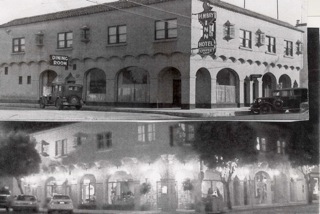
He leased it to Charles Carlini (not a good idea). So–my father took it over–I think it was in 1936.
The Moss Beach house was sold to my mother’s sister Eva and her husband Albert Quilici (ed. I have to re-check the spelling] and we moved to an apartment in the Half Moon Bay Inn.
I attended Half Moon Bay High School and graduated in 1935. I commuted to San Mateo Junior College. Before I even completed the first year he (my father) converted one corner of the Half Moon Bay Inn into a soda fountain and made me the proprietor at the age of 18 and a half. I operated it all through World War 2–quite an experience. Also very successful.
[Image below: “My cousin Raymond Martini home on leave.”]

In 1944 I married Jack Parker, a local young man. We lived in the apartment above the fountain. Son Jack was was born in 1947. In 1949 we moved to San Bruno into a new home.
My husband worked for RCA in San Francisco and was an excellent professional musician (trumpet). My daughter Janet was born in 1953. She was a well known journalist with the San Mateo Times. She married James Beck from San Bruno. Sadly, at the age of 41 she died, leaving a five-year-old daughter Amanda.
Our son, Jack, graduated from San Jose State. So did Janet. He became a music teacher and married Sally Graham. They have two sons—22 and 28 years old.
After [my husband] Jack retired, we moved to Cameron Park in 1981. I continue to live here. My son, Jack and his wife lived Rancho Murieta. I wish I could tell you more but I think you have more in your book, “Half Moon Bay Memories.”
Forgot to mention —-I can’t recall the date my mother and father were living in which is now called Pacifica (at that time it was Edgemar). He had a bar there. In May 1956 he was trying to repair a garage door. The spring broke loose from the wall and hit his skull. He died two days later. After that mother lived in Burlingame and later with me. She died in a convalescent home in 1963.
Sylvia Parker June 2009
[Image below: Family picture]
